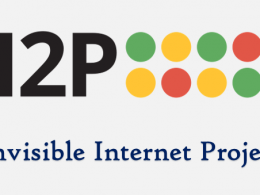Metasploit Framework 5.0 has released.
Metasploit 5.0 brings many new features, including new database and automation APIs, evasion modules and libraries, language support, improved performance, and ease-of-use.
Metasploit’s new database and automation APIs, evasion modules and libraries, expanded language support, improved performance, and ease-of-use lay the groundwork for better teamwork capabilities, tool integration, and exploitation at scale.
Database and automation APIs
Metasploit 5.0 is the first step in modernizing how Metasploit interacts with data and other tools. On top of the existing Postgresql database backend from 4.x, Metasploit 5.0 adds the ability to run the database by itself as a RESTful service, with which multiple Metasploit consoles and even external tools can then interact. The change also offloads some bulk operations to the database service, which improves performance by allowing parallel processing of the database and regular msfconsole operations.
Metasploit’s new JSON-RPC API will be a welcome addition for users who want to integrate Metasploit with new tools and languages. Metasploit has long supported automation via its own unique network protocol, but being unique also meant that it was more difficult to test or debug using standard tools like ‘curl’. Metasploit 5.0 also adds a common web service framework to expose both the database and the automation APIs; this framework supports advanced authentication and concurrent operations and paves the way for future services.
For backward compatibility, Metasploit 5.0 still supports running with just a local database, or with no database at all. It still supports the original MessagePack-based RPC protocol as well. You can read more about how to set up and run these new services here.
Evasion modules and libraries
Earlier in 2018, they announced the new evasion module type in Metasploit along with a couple of example modules. These modules allow users to easily develop their own evasions, and they add a set of convenient libraries that developers can use to add new on-the-fly mutations to payloads; a recent module takes advantage of these evasion libraries to generate unique persistent services on the fly. Writing shellcode in C is definitely more fun than assembler, and with Metasploit 5.0’s generation libraries, you can do that as well. You can read more about evasion modules, libraries, and how to create your own own evasive content here.
Usability improvements and exploitation at scale
A long-requested feature for Metasploit is the ability to execute an exploit module against more than one target at a time. While Metasploit has supported the concept of scanners that can target a subnet or network range, using an exploit module was limited to only one host at a time. This meant that any attempt at mass exploitation required writing a script or manual interaction. With Metasploit 5.0, any module can now target multiple hosts in the same way by setting RHOSTS to a range of IPs or referencing a hosts file with the file:// option. You can even use the old method of setting RHOST by itself as well, since Metasploit now treats RHOST and RHOSTS as identical options.
Features you never knew you had!
In several cases, a feature Metasploit framework added turned out to be useful for 4.x users as well, and letting it bake in the unstable branch allowed us to work out the bugs before backporting.
Have you previously been stymied by Metasploit’s ‘slow search’ message when looking for modules? Among other improvements, Metasploit now starts much faster out of the box, thanks to an improved search mechanism that doesn’t rely on the database to work. This means that searching for modules is always fast, regardless of how you use Metasploit. In addition, modules have gained a lot of new metadata capabilities. Wondering which modules have side effects and leave artifacts on disk? You can now search for that!
Have you ever wanted to interact with a shell session but been frustrated by its capabilities? Metasploit’s new metashell feature, which is available automatically in all shell sessions, allows users to background sessions with the background command, upload/download files, or even run resource scripts—all without needing to upgrade to a Meterpreter session first. Meterpreter still reigns supreme in terms of overall capability and versatility, but metashell kicks shell sessions up a notch by making them easier and more interactive.
Have you ever wanted to add something to Metasploit, but Ruby got in the way? Maybe there was a library that would be hard to port to run within Metasploit without a lot of work. To ameliorate this, Metasploit 5.0 includes support for three different module languages: Go, Python, and Ruby. We have talked about external modules in the past (e.g., here and here), but they continue to improve in Metasploit, providing a handy way to expand Metasploit’s capability while also providing increased performance and capabilities.
New release cycle
Metasploit development into two branches: a 4.x stable branch that underpins Metasploit Pro and open-source projects like Kali Linux, ParrotSec Linux, and Rapid7’s own open-source Metasploit Framework installer; and an unstable branch where core development is done. If you have checked out Metasploit from Github over the past year, you have probably used the latter, whose default prompt was msf5>.
Before, a feature might sit in in a pull request for months and still cause bugs Metasploit team couldn’t see before shipping straight to Kali Linux or another distribution. With an unstable branch for Metasploit development, the team was able to iterate on features more quickly and thoroughly, making it easier to get real feedback on them before graduating them to a Metasploit stable release. Some features even got merged into the 4.x branch early because they were deemed stable before Metasploit 5.0 shipped. Other features took longer to stabilize and are represented in the final Metasploit 5.0 release.
The takeaway is that Metasploit now has a more mature development process that hope to continue leveraging in the future to enable even bigger improvements to the code base.
The following is a high-level overview of Metasploit 5.0’s features and capabilities.
- Metasploit users can now run the PostgreSQL database by itself as a RESTful service, which allows for multiple Metasploit consoles and external tools to interact with it.
- Parallel processing of the database and regular msfconsole operations improves performance by offloading some bulk operations to the database service.
- A JSON-RPC API enables users to integrate Metasploit with additional tools and languages.
- This release adds a common web service framework to expose both the database and the automation APIs; this framework supports advanced authentication and concurrent operations. Read more about how to set up and run these new services here.
- Adds evasion module type and libraries to let users generate evasive payloads without having to install external tools. Read the research underpinning evasion modules here. Rapid7’s first evasion modules are here.
- The metashell feature allows users to run background sessions and interact with shell sessions without needing to upgrade to a Meterpreter session.
- External modules add Metasploit support for Python and Go in addition to Ruby.
- Any module can target multiple hosts by setting RHOSTS to a range of IPs, or by referencing a hosts file with the file:// option. Metasploit now treats RHOST and RHOSTS as identical options.
- An updated search mechanism improves Framework start time and removes database dependency.











